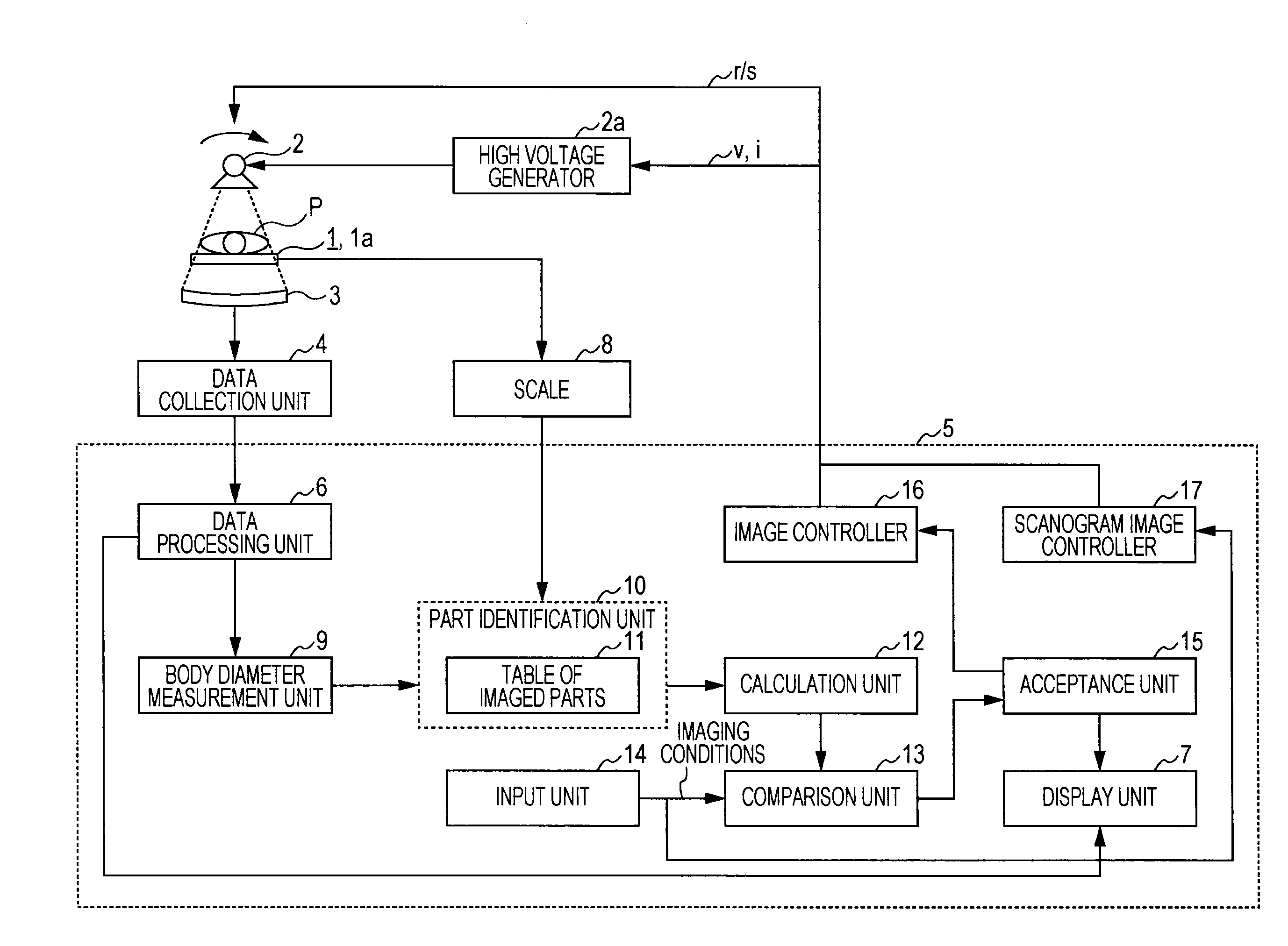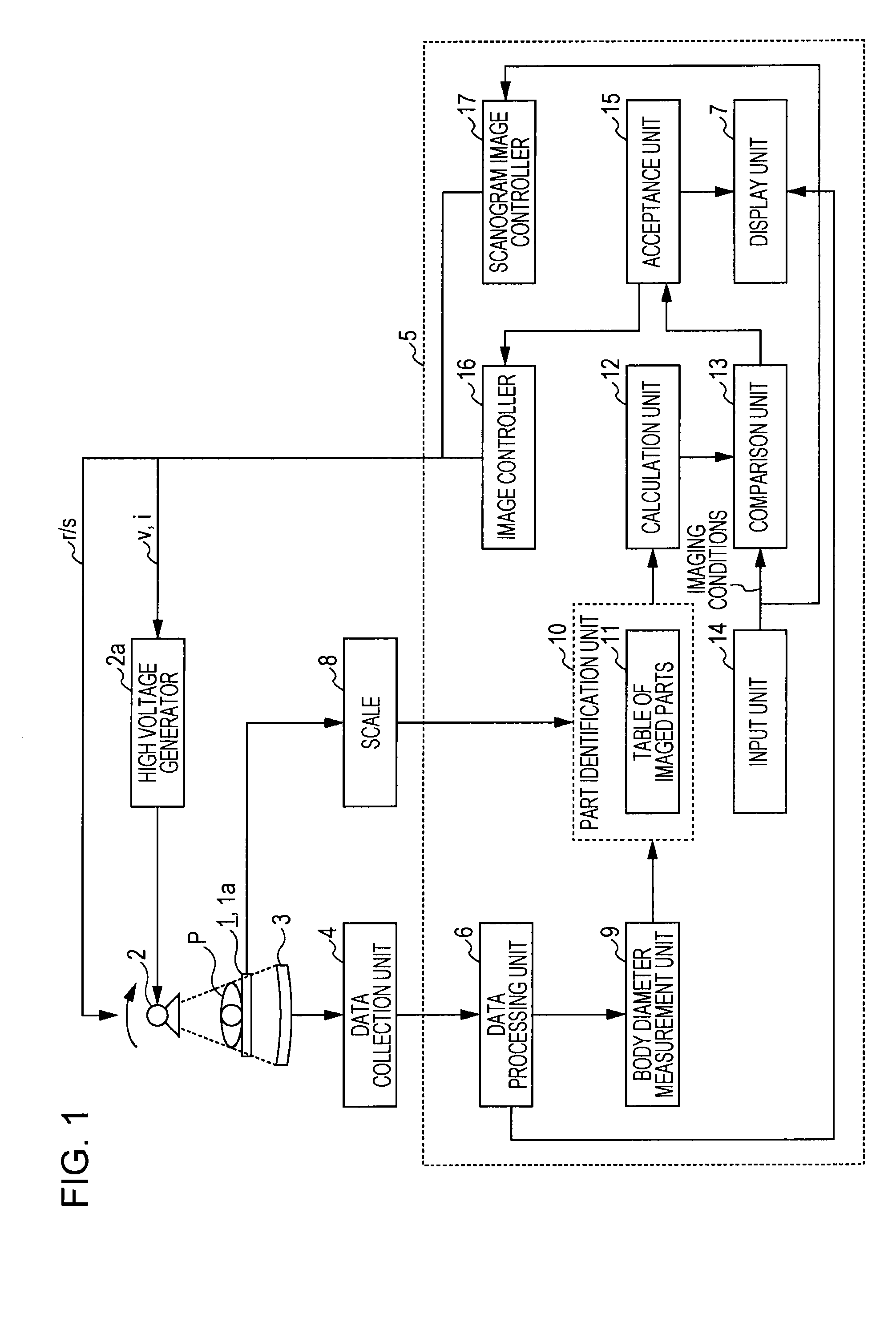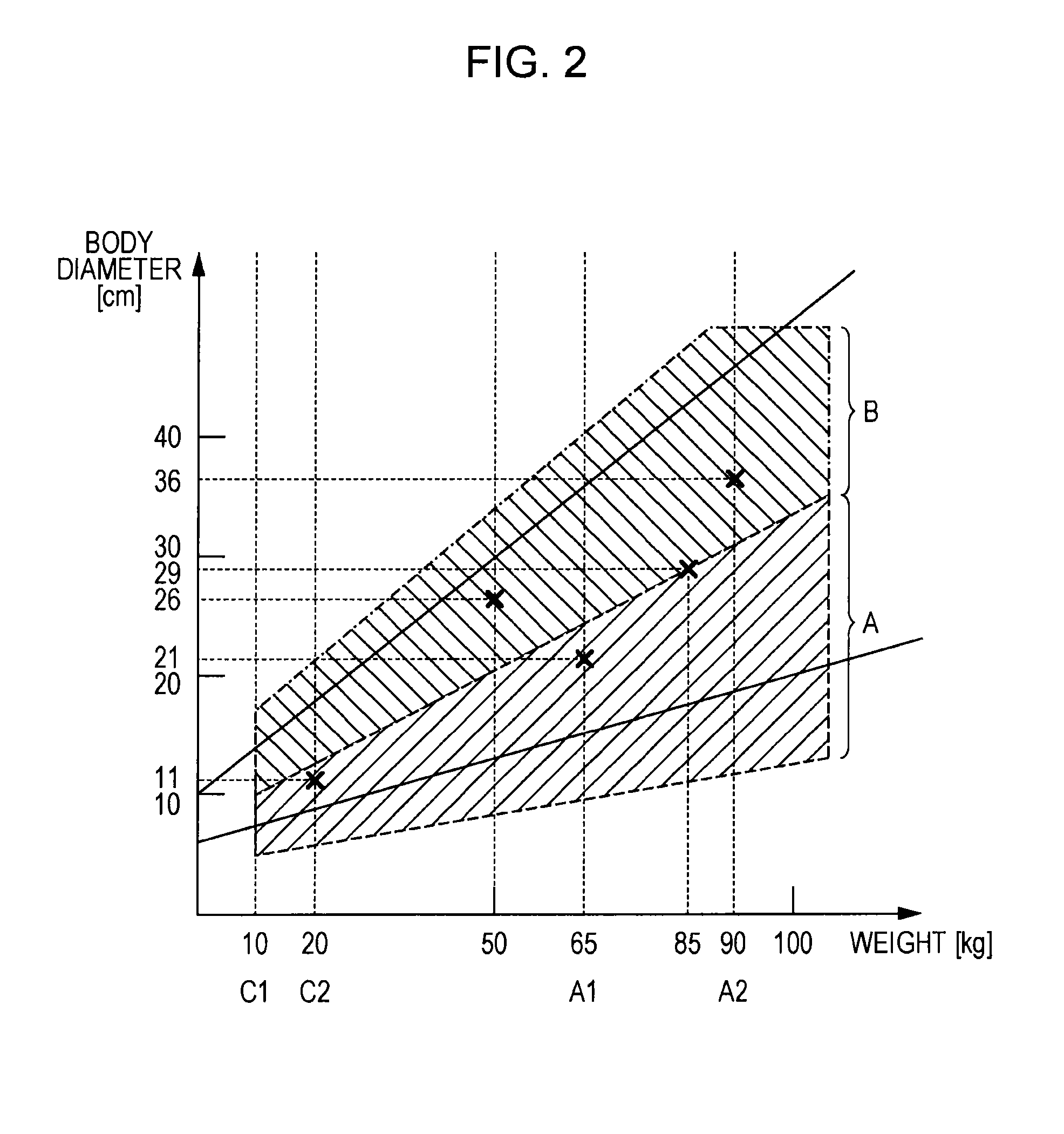X-ray CT system
a ct system and x-ray technology, applied in the field of x-ray ct system, can solve problems such as excessive radiation exposure, and achieve the effect of preventing excessive radiation exposur
- Summary
- Abstract
- Description
- Claims
- Application Information
AI Technical Summary
Benefits of technology
Problems solved by technology
Method used
Image
Examples
Embodiment Construction
[0025]The embodiment of the X-ray CT system will be explained with reference to each figure.
[0026]FIG. 1 is a block diagram indicating the composition of the X-ray CT system. As FIG. 1 indicates, the X-ray CT system comprises a couch 1, X-ray tubes 2, an X-ray detector 3, a data collection unit 4, and a console 5. The console 5 comprises a data processing unit 6 and a display unit 7.
[0027]The couch 1 comprises a couch top 1a on which the subject P is placed, a couch top driving means (illustration omitted) that enables adjustment of the imaging position by moving the couch top 1a towards the body axis of the subject and a helical scan, and a scale 8.
[0028]The X-ray tubes 2 and X-ray detector 3 are provided in a rotor (illustration omitted) such that they are placed facing each other with the couch top 1a on which subject P is placed between them. A high voltage generator 2a applies high voltage to the X-ray tubes 2 by receiving control information (described later) from the console ...
PUM
 Login to View More
Login to View More Abstract
Description
Claims
Application Information
 Login to View More
Login to View More - R&D
- Intellectual Property
- Life Sciences
- Materials
- Tech Scout
- Unparalleled Data Quality
- Higher Quality Content
- 60% Fewer Hallucinations
Browse by: Latest US Patents, China's latest patents, Technical Efficacy Thesaurus, Application Domain, Technology Topic, Popular Technical Reports.
© 2025 PatSnap. All rights reserved.Legal|Privacy policy|Modern Slavery Act Transparency Statement|Sitemap|About US| Contact US: help@patsnap.com



